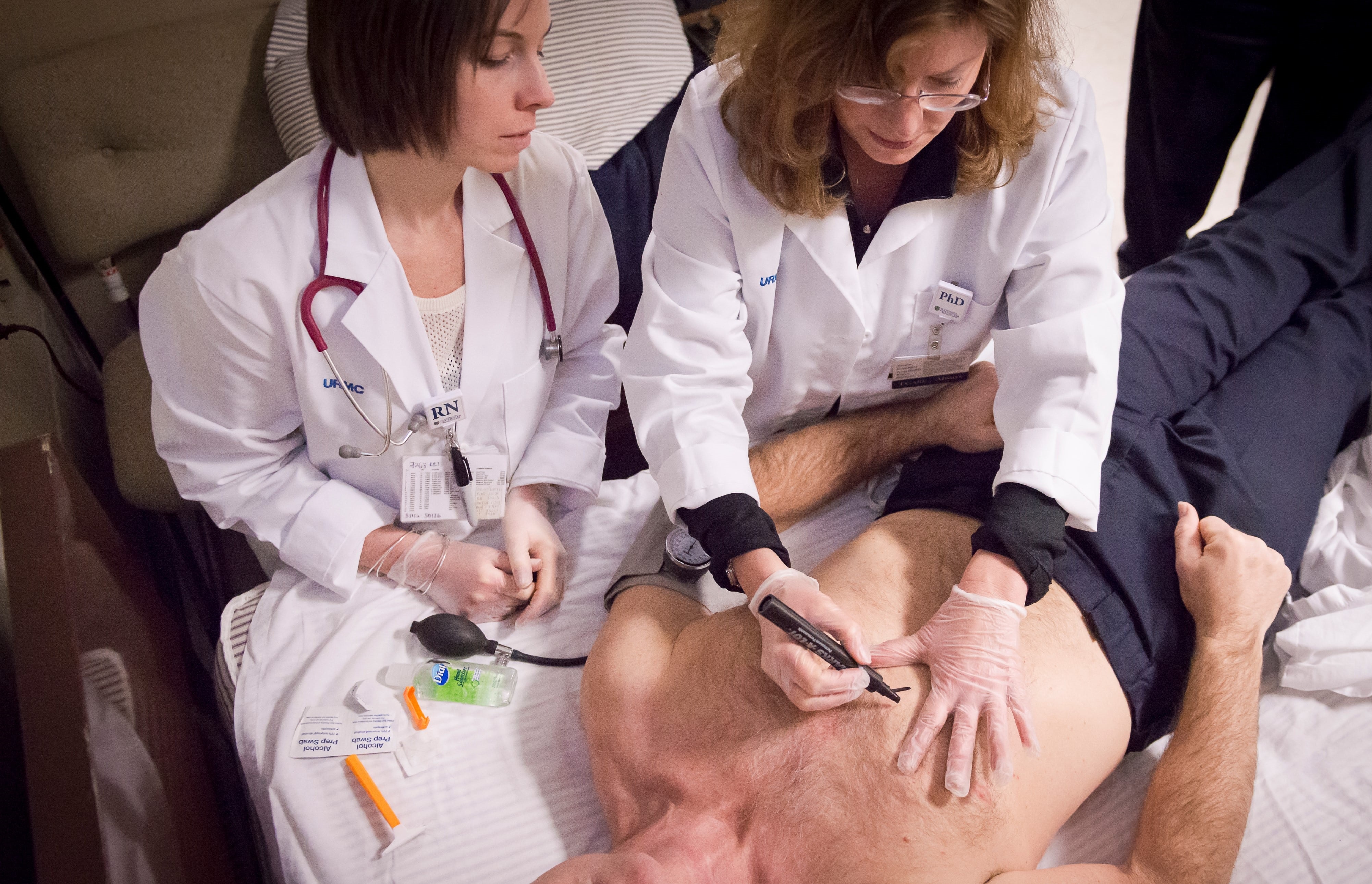2023-07-11 米国国立標準技術研究所(NIST)
 In this 2013 photo, nurse scientists Becki Vincent and Mary Carey from the University of Rochester collect electrocardiogram data from a firefighter at the Dewey Avenue Firehouse in Rochester, New York. Now, a decade later, researchers at NIST, Rochester and Google have used this data to train an AI model to predict cardiac events.
In this 2013 photo, nurse scientists Becki Vincent and Mary Carey from the University of Rochester collect electrocardiogram data from a firefighter at the Dewey Avenue Firehouse in Rochester, New York. Now, a decade later, researchers at NIST, Rochester and Google have used this data to train an AI model to predict cardiac events.
Credit: Karen O’Hern/University of Rochester School of Nursing
◆米国国立標準技術研究所(NIST)とその同僚は、機械学習を使用して、消防士の異常な心臓リズムを正確に特定することができるようになりました。研究者たちは、将来的に消防士が着用できる携帯型心臓モニターを開発することを望んでいます。
<関連情報>
- https://www.nist.gov/news-events/news/2023/07/ai-can-accurately-predict-potentially-fatal-cardiac-events-firefighters
- https://www.sciencedirect.com/science/article/abs/pii/S0379711223001200
畳み込みニューラルネットワークを用いた消防におけるリアルタイムの心臓健康モニタリングに向けて Towards real-time heart health monitoring in firefighting using convolutional neural networks
Jiajia Li, Christopher Brown, Dillon J. Dzikowicz, Mary G. Carey, Wai Cheong Tam, Michael Xuelin Huang
Fire Safety Journal Available online :28 June 2023
DOI:https://doi.org/10.1016/j.firesaf.2023.103852
Abstract
A machine learning-based heart health monitoring model, named H2M, was developed. Twenty-four-hour electrocardiogram (ECG) data from 112 career firefighters were used to train the proposed model. The model used carefully designed multi-layer convolution neural networks with maximum pooling, dropout, and global maximum pooling to effectively learn the indicative ECG characteristics. H2M was benchmarked against three existing state-of-the-art machine learning models. Results showed the proposed model was robust and had an overall accuracy of approximately 94.3%. A parametric study was conducted to demonstrate the effectiveness of key model components. An additional data study was also carried out, and it was shown that using non-firefighters’ ECG data to train the H2M model led to a substantial error of ∼40%. The contribution of this work is to provide firefighters on-demand, real-time status of heart health status to enhance their situational awareness and safety. This can help reduce firefighters’ injuries and deaths caused by sudden cardiac events.


